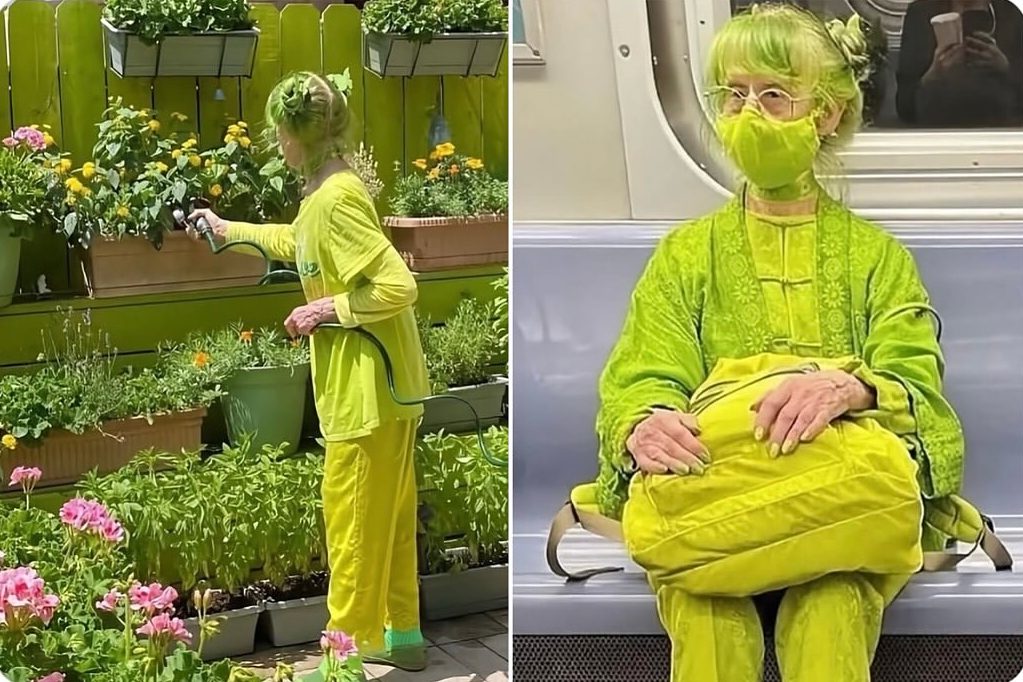She’s 84, Dresses Head-to-Toe in Green Every Day, and Became a New York Icon Without Saying a Word
It’s easy to miss magic in a city as fast and noisy as New York. But if you happen to ride the subway in Brooklyn or walk past a small garden full of blooming flowers and emerald-painted furniture, you might spot someone so extraordinary, so vivid, that your day suddenly feels like a page from a storybook. Her name is Elizabeth Eaton Rosenthal, but the world knows her as “The Green Lady of Brooklyn.”
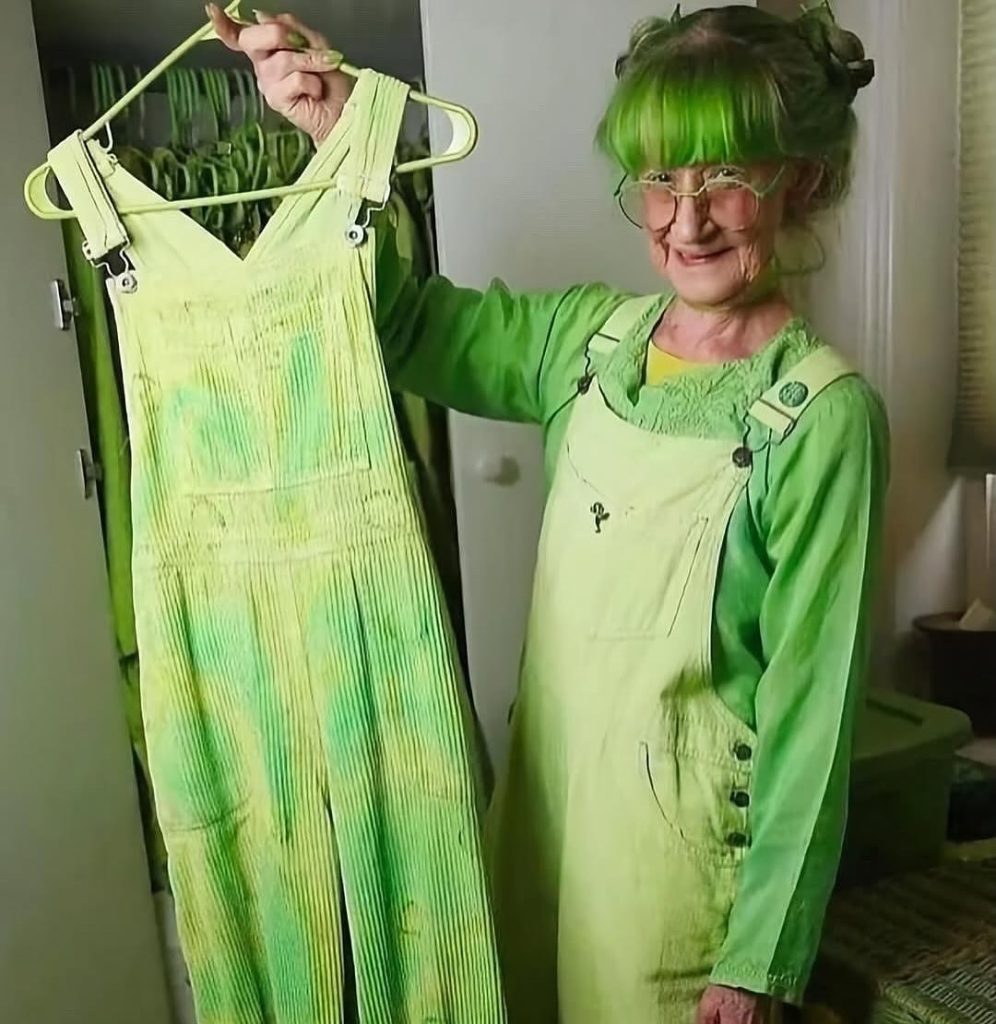
Elizabeth is 84 years old. And for over two decades, she has dedicated her life to one simple, powerful idea: green. Not just as a favorite color, or as a passing phase. No, for her, green is a lifestyle. From her neon-hued hair and painted fingernails to her vintage lace dresses, velvet jackets, and even the lenses in her glasses—every inch of her life has bloomed into green. Her home in Carroll Gardens is filled with green furniture, green walls, green tea sets, and green shoes. The fence around her garden? Green. Her watering can? Green. The subway pole she’s holding onto? You guessed it—green gloves wrapped around it.
But to understand how this woman became a living sculpture of joy and self-expression, you have to go back to the very beginning. Elizabeth was born in 1941 in Amherst, Nova Scotia, a quiet town in Canada. Raised by her grandparents, she grew up surrounded by creativity and discipline. Her early life was steeped in art, and she studied painting under none other than Alex Colville, one of Canada’s most renowned realist artists. From an early age, she was drawn to aesthetics—not just how things looked, but how they made people feel.
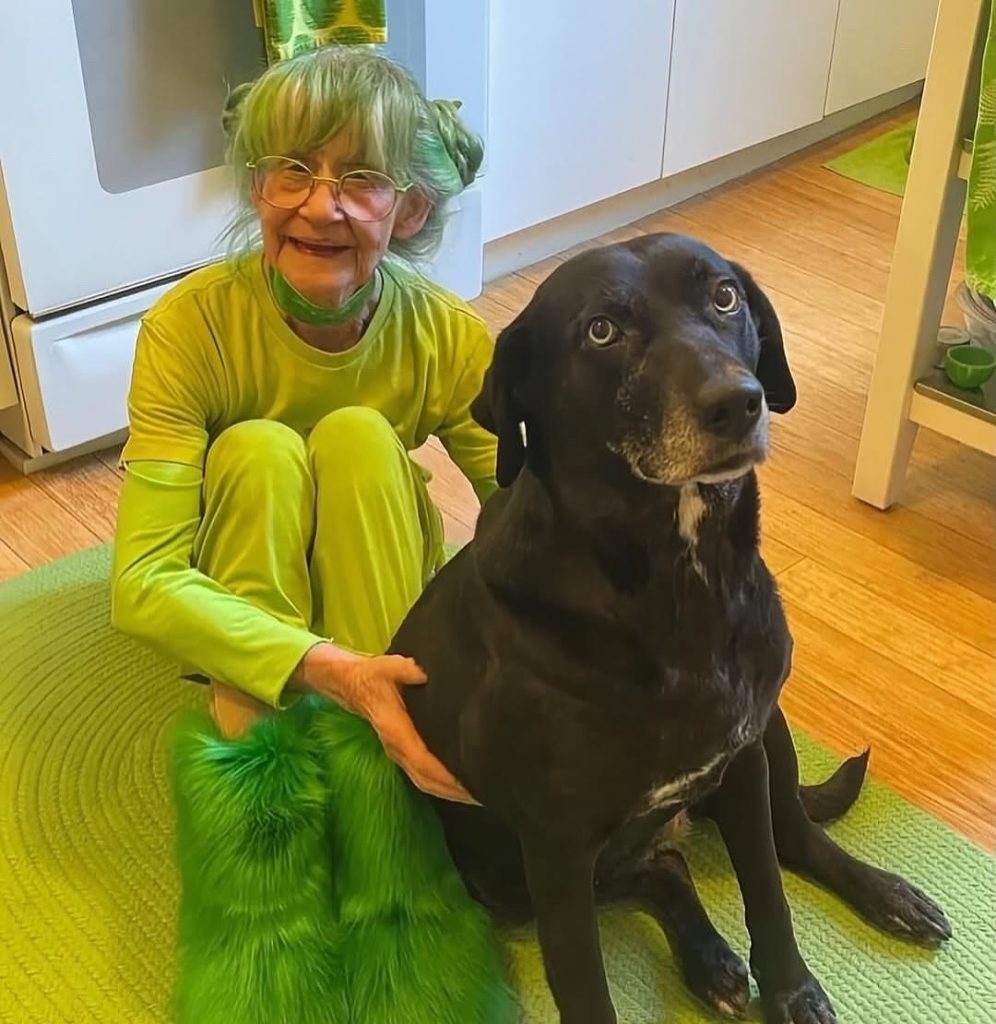
In 1964, she moved to New York City and carved out a life for herself in one of the world’s most competitive cities. She became a textile designer and eventually founded her own company, SweetPea Design Studio. Her work included designing hand-painted fabrics for luxury fashion brands like Calvin Klein and Ralph Lauren. She had an eye for beauty, texture, and color that spoke through her fabrics long before her wardrobe ever did.
Then, around the year 2000, something changed. Elizabeth decided that green was more than a preference—it was a path. She began slowly transforming her wardrobe, her hair, her home. It wasn’t a performance or a gimmick. It was quiet at first. Just a piece here, an accessory there. But soon, green wasn’t just something she wore. It was something she became.
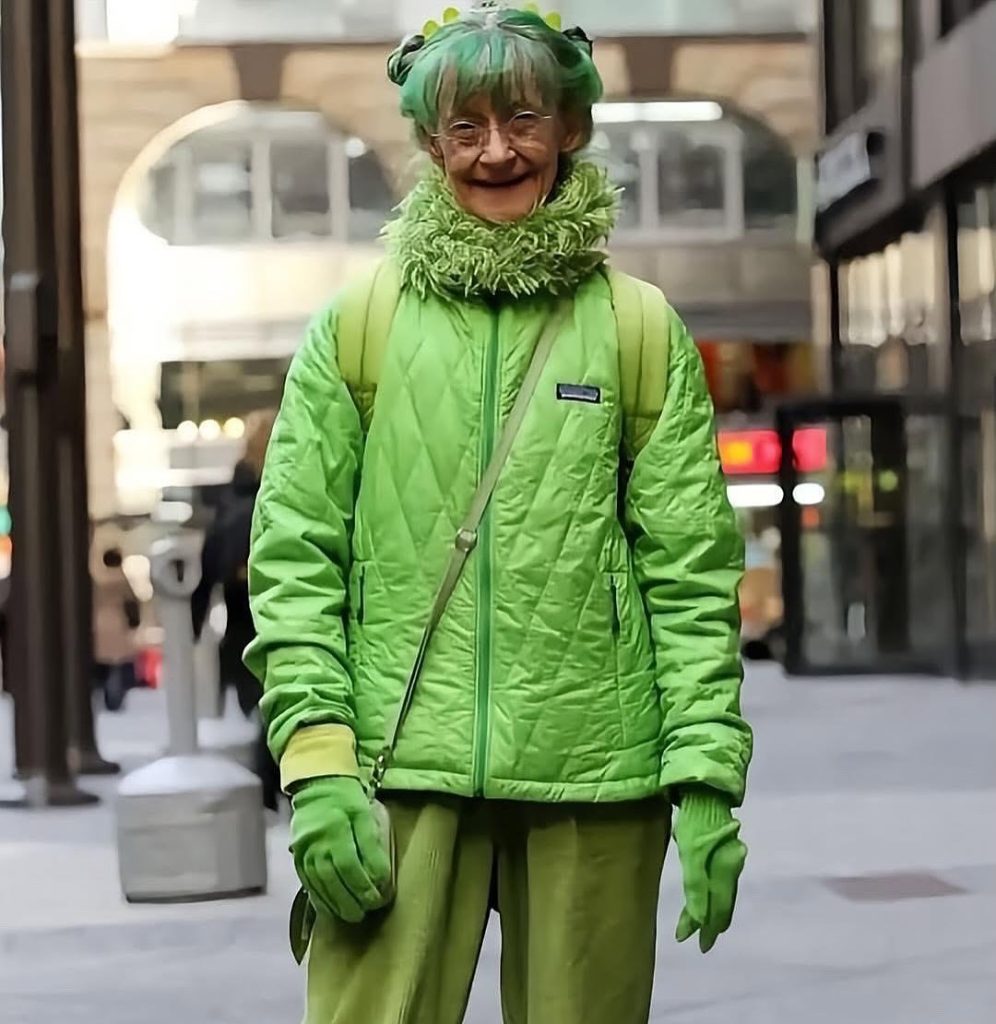
Ask her why, and her answer is disarmingly simple: green makes her happy. It’s the color of life, of nature, of growth. She says it lifts her spirits, and she hopes it lifts others’ as well. And that’s the thing—you don’t need to know her name to feel her impact. If you’ve seen her on the subway, you’ve probably smiled without realizing it. If you’ve walked past her on the street, you might have stopped mid-step, feeling like you’d just seen something magical in a world that’s often grey and rushed.
In a city known for everyone minding their own business, Elizabeth is a reminder that you don’t need a loud voice to be unforgettable. She never stops to preach or explain herself. She doesn’t push her aesthetic onto others. She simply lives it, beautifully and unapologetically. And that alone invites people to pause, to wonder, to smile.
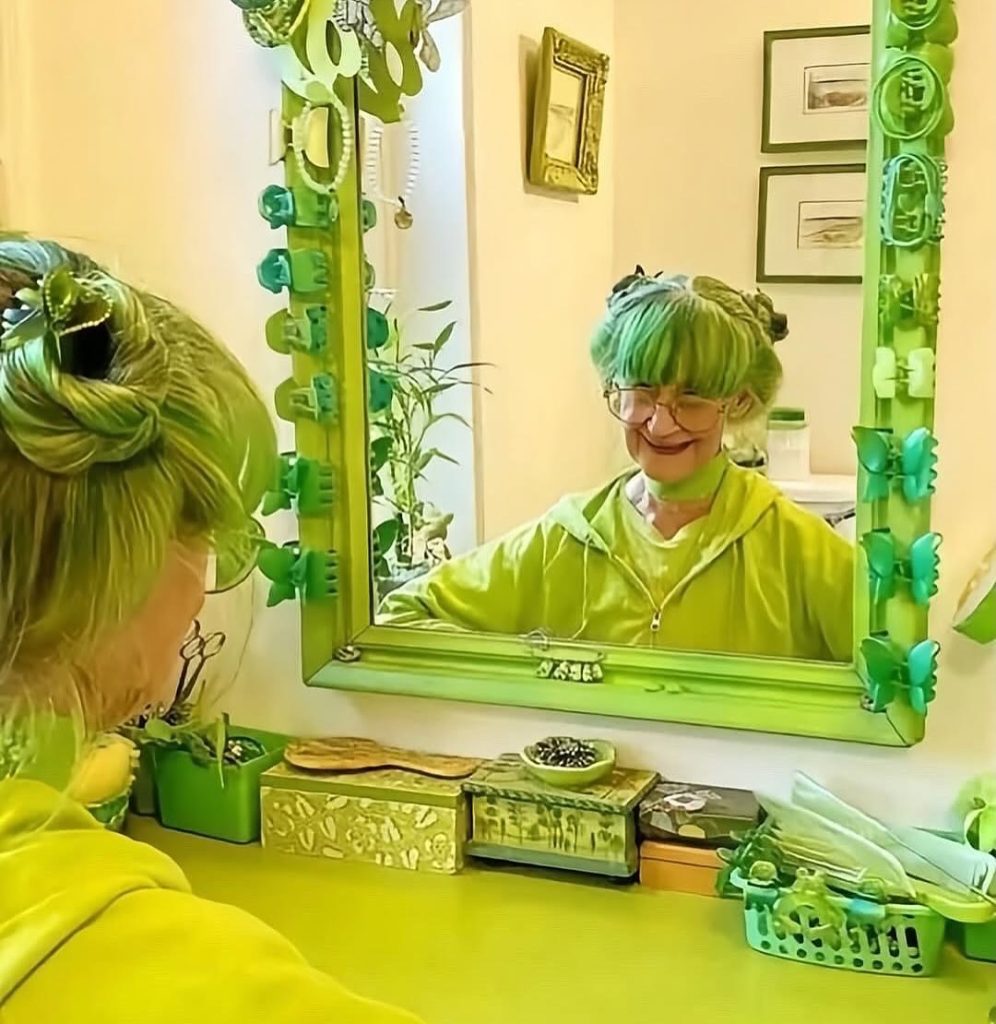
Her influence has quietly spread far beyond Brooklyn. She’s been featured in interviews, magazine spreads, and blog posts. She’s appeared on social media pages around the world, often captioned with admiration, disbelief, or pure joy. “Is she real?” people ask. Yes, she’s real. And she’s one of the most authentic people you’ll ever encounter.
Elizabeth’s life is not a costume. It’s a commitment to joy. Her choice to dress only in green is not about trends or attention. It’s about peace. It’s about finding what makes your soul feel alive and choosing to live in that truth every day, no matter what anyone else thinks.
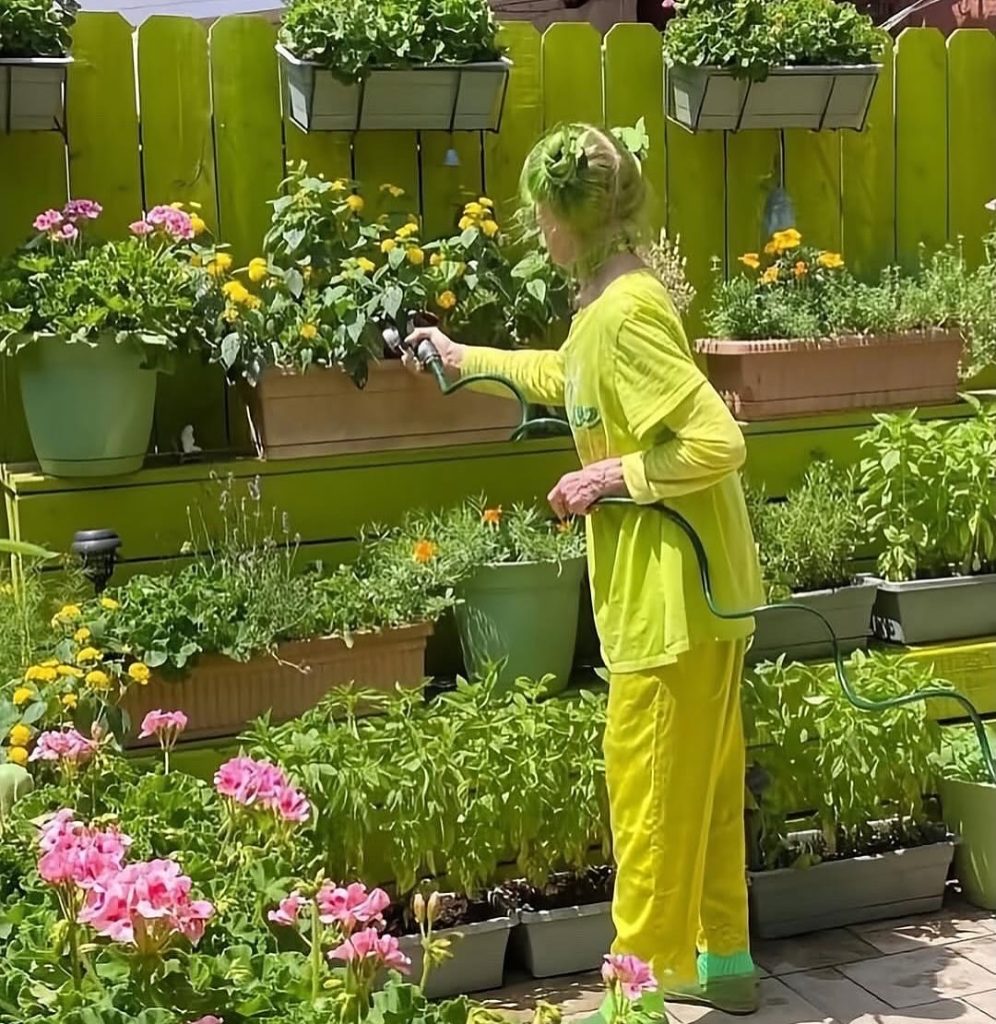
And maybe that’s why she resonates so deeply in a world that often feels disconnected. We’re so used to people curating their lives for others—tailoring their identities for clicks, likes, or approval. But Elizabeth isn’t selling anything. She’s not marketing a brand. She’s just living her life, surrounded by the color that brings her the most happiness. And in doing so, she’s become a symbol of something increasingly rare: the freedom to just be yourself.
There’s something profoundly moving about someone in their 80s who still wakes up every morning with creativity in her veins. Who still styles her hair in green buns, picks her green lipstick with care, and walks the city like she’s part of an enchanted world. Elizabeth has shown us that style isn’t about youth, fashion, or following rules. It’s about spirit. It’s about telling your story, without ever saying a word.

Her presence also subtly challenges the way we think about aging. In a culture that too often sidelines older people, she radiates vitality, color, and life. She reminds us that aging doesn’t mean fading—it can mean blooming into something even more beautiful. She’s a quiet revolution in motion. She makes people of all ages rethink what it means to grow older.
And perhaps, more than anything, she represents the incredible power of doing something just because it brings you joy. In a world that demands reasons and explanations for everything, her lifestyle is a soft rebellion. A daily declaration that happiness can be reason enough. That color can be a form of communication. That being different is not only okay—it’s wonderful.
So the next time you find yourself caught in a grey routine, scrolling through screens or walking through crowded streets with your head down, remember Elizabeth Eaton Rosenthal. The Green Lady of Brooklyn. The woman who turned her favorite color into a living language. She didn’t need a stage, a spotlight, or a social media following to become an icon. All she needed was to follow her heart, one shade of green at a time.
In a city full of noise, she’s a whisper that lingers. In a world full of trends, she’s a classic. And in a society obsessed with youth, she’s proof that authenticity never gets old.

Daniel Reed is a curious mind with a passion for breaking down how the world works. With a background in mechanical engineering and digital media, he turns complex ideas into easy-to-understand articles that entertain and inform. From vintage tools and modern tech to viral internet debates and life hacks, Daniel is always on the hunt for the “why” behind the everyday. His goal is simple: make learning feel like scrolling through your favorite feed — addictive, surprising, and fun.
